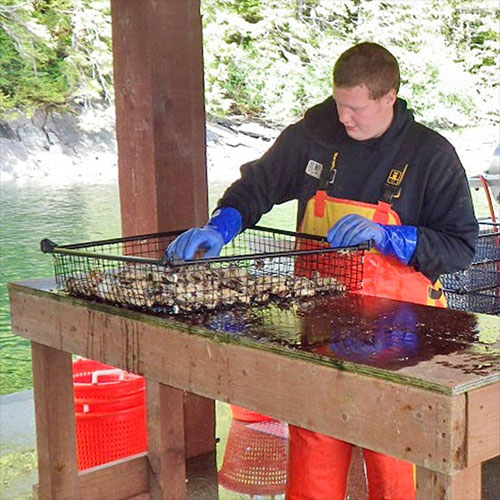
New technique could improve Alaska farmed oyster and kelp productivityBy PAULA DOBBYN
June 26, 2017
University of Arizona researcher Ben Renquist and his coworkers have refined a technique to test fertilized fish eggs for high oxygen consumption and carbon dioxide production during metabolism, using a chemical they trademarked Alamar Blue®.
The high oxygen–consuming fish eggs were proven to grow significantly faster, showing promise for improved aquaculture production. Experiments were first done on zebrafish, and have also shown promise on tilapia, trout, oysters and shrimp cultured species. Freitag’s role in the project is to communicate to the aquaculture/mariculture industry the high potential the method has for Alaska, western states and nationwide. “This technique could help both kelp farmers and oyster farmers in Alaska. It appears to work on any biological life - plant or animal - and allows for the selection of faster growing individuals,” said Freitag. The Western Regional Aquaculture Center funded the study, which was completed last year. Renquist says the application of the proposed technology by commercial growers will reduce the cost and effort of rearing slow growing fish or shellfish. “It will also allow growers that utilize broodstock programs for generations of production of fish and shellfish to select for the fastest growing families at the egg stage instead of having to separately hold and evaluate groups over a long period of time, reducing cost and freeing up valuable tank and handling time,” he said.
Related:
Representations of fact and opinions in comments posted are solely those of the individual posters and do not represent the opinions of Sitnews.
|
||||
